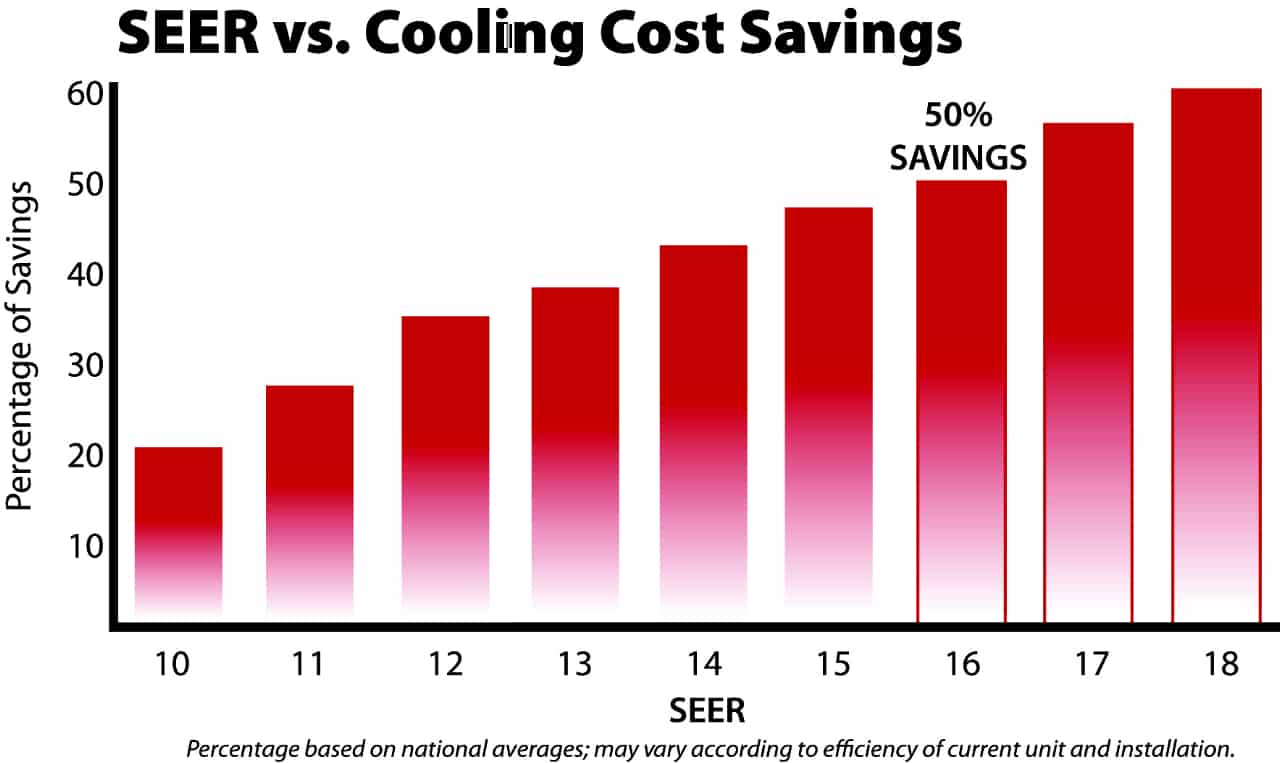
SEER is the shorthand description for Seasonal Energy Efficiency Rating. In layman’s terms, the acronym provides an energy efficiency rating for you to buy when purchasing a new air conditioning system. The higher the number, the better energy efficiency you’ll achieve. You’ll also note the price goes up considerably as the rating goes higher. Most units today run between 13 and 16, but there are units out there that go up an efficiency rating of 20.
13 SEER is the most common and most affordable units. Every increase in number will increase the cost of the unit by 5-10% in most markets. You will experience better efficiency which in theory will lower your air conditioning costs but do not expect to see the significant reduction in your energy costs by adding more energy efficient units. You will save money and recoup the cost of a more efficient unit over the life of the unit, but you should only expect low percentage savings on the power bill monthly. You should also note, while the unit is energy efficient, the building the unit is being installed in can have a significant impact on the amount of time your unit runs to cool the place down. That said, if you live in a home with poor insulation, increasing the SEER rating of your new unit will not keep the cold air inside.

New AC units are going to have a higher SEER rating than those that are older. This is just common sense, but it does not always mean you need to spend a fortune on a new AC unit. Several factors will emerge into play and be taking a look at all of them will help deduct the best possible resolution to this venture.
Before you look into the AC unit itself, you will need to determine a few things about the environment you are trying to cool such as; insulation, layout, air leakage, the condition of the current piping and duct system already in place to filter the conditioned air, and the current operating cost of the AC unit already working in the environment you want to cool.
In the end, the higher the SEER rating, the more efficient your cooling system is going to be. Aside from looking at the physical aspect of the area you are cooling you will need to deduct specific percentages to figure out what you are going to need to have a sufficient system.
This is a mathematical equation that uses the combination of comparing the SEER rating that will provide a certain amount of BTUs to the cooling per WattHour (Wh) of operation. The SEER rating itself will determine the number of BTUs, for example, a SEER rating of 10 will produce 10 BTUs of cooling per Wh.

This facilitates the efficiency of higher SEER rating. Wh is the one that measures either electrical energy produced or consumed, and this is determined by the amount of energy used when the AC unit runs for an hour. To break this down a little better if you are using a 100 watt light bulb for an hour you are using 100 Wh of energy.
There are many factors in determining the SEER rating and this is why Cool Bear Services is there to help you break all this down and figure out what is going to be the best unit to acquire and why. Why waste your time? Call Cool Bear Services for a consultation and quote. Make sure to discuss both the tonnage of your new unit along with its rating with Cool Bear Services because adequately selecting equipment will save you on your energy costs. Overdoing it with either item will not save you money, bigger is not always better.
For a consultation and appointment contact us today at (561) 424-6437
